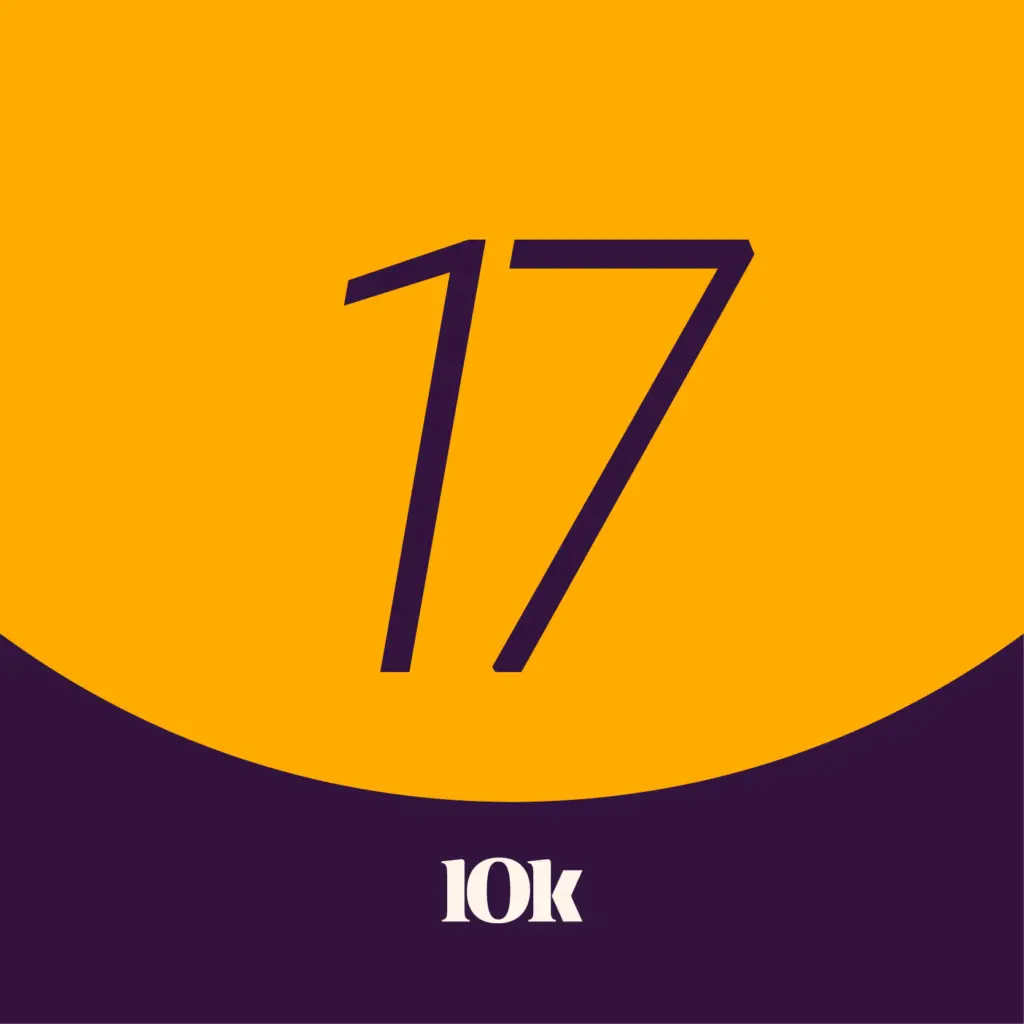Launching new technology is almost never easy, but it’s particularly nuanced in the healthcare space. Rightfully so, as doctors and patients often rely on these technologies in critical ways.
That’s why regional health system, ProMedica, partnered with the healthcare technology experts at Kapios Health to launch new technology that improves patient care.
On this episode, we talk with the President of Kapios Health, Justin Hammerling. Justin walks us through the benefits and challenges of operating a technology companies inside a large regional health system.
He is interviewed by Chief Innovation Officer, Jim VanderMey.
Enjoy!
This podcast content was created prior to our rebrand and may contain references to our previous name (OST) and brand elements. Although our brand has changed, the information shared continues to be relevant and valuable.
Episode Transcript
Andrew Powell: Hey, everybody. On this episode, we will talk to Justin Hammerling, the president of Kapios Health. They are technology company focused on bringing innovative patient care solutions to market. Justin is interviewed today by OST’s CIO and resident healthcare expert, Jim VanderMey. Enjoy.
[tone]
Jim VanderMey: I want to welcome vice president of Innovation of ProMedica and the president of Kapios, Justin Hammerling. Good morning, Justin.
Justin Hammerling: Good morning, Jim. Nice to be here. This is a great place you guys have here.
View Full Transcript
Andrew Powell: Hey, everybody. On this episode, we will talk to Justin Hammerling, the president of Kapios Health. They are technology company focused on bringing innovative patient care solutions to market. Justin is interviewed today by OST’s CIO and resident healthcare expert, Jim VanderMey. Enjoy.
[tone]
Jim VanderMey: I want to welcome vice president of Innovation of ProMedica and the president of Kapios, Justin Hammerling. Good morning, Justin.
Justin Hammerling: Good morning, Jim. Nice to be here. This is a great place you guys have here.
Jim: Thank you. I just recently concluded the tour of OST with Justin. We have been working with Kapios for a while. As you’re here today, I thought it would be a great opportunity for us to record a podcast together because Kapios is doing some things that are really, really interesting to me in the area of innovation. Why don’t you tell me Kapios—who is it and what do you do?
Justin: Yeah. Kapios—we’re a commercialization engine basically for healthcare innovation’s institutes or departments that not only develops software for the Healthcare System, but then also has the sales and marketing team to be able to take those onto the marketplace. We have been able to successfully commercialize two different pieces of software for ProMedica Innovations and another one for MedStar Health.
Jim: So, ProMedica is a pretty significant healthcare system in the Toledo area.
Justin: Correct. Yeah.
Jim: So, tell me a little bit about ProMedica.
Justin: ProMedica, we were regional health care system. Now, we’re a national one. We started in Toledo, Ohio and Northwestern Ohio and have hospital facilities in both Northwest, Ohio and Southeastern Michigan. But recently, we just merged and acquired HCR Manor Care in the senior living space. So, we’re now in 30 states and from a stroke of a pen we grew from an organization with about 17,000 employees to an organization just under 60,000 employees.
Jim: And I think that’s one of the pieces that so interest me with ProMedica, the choice to expand into senior care could be an entirely another conversation. But ProMedica is a very entrepreneurial Healthcare System. Why a tech startup company in that?
Justin: Because we saw the opportunity in the industry. When I started with ProMedica, I say unofficially six years ago because for the first three years, I was actually with Cleveland Clinic Innovations. And as a part of Cleveland Clinic Innovations, we had this Global Healthcare Innovation Alliance that ProMedica was a member of that Cleveland Clinic led and there was about seven or eight other Healthcare Systems in the alliance. The intent was for us to all be able to idea share, that the ideas collaboratively and if there are synergies work on joint projects together to get them onto the marketplace. It’s a great idea.
For medical devices, that process is fairly straightforward. You get a patent you do some prototyping, you do bench testing, maybe animal trials, you go to your first man somewhere, you get enough to add for an FDA, you raise some money and you go out into the market and start selling and grow and be acquired. Not every company or idea goes that way, there’s always failures but that’s the process to success. With software, there’s no vehicle into the marketplace. The intent really can’t be ‘to be sold to epic’.
Jim: Right.
Justin: Epic’s going to build their own type of thing or McKesson, the big guys, they’re not really big acquirers of new technology. They might implement some of it or they might reproduce it, but they’re not the strategic target like trying to sell medical device to Simmons or Stryker or something like that.
So, we were asking the questions like who do we license these technologies to? Who is going to buy the service by the software, help us commercialize this to other Healthcare Systems? If we build this app as ProMedica and I sell it to the University of Michigan or something like that and it goes down or there’s normal maintenance issues, Michigan IT isn’t going to call up ProMedica’s IT helpdesk to get the problem solved. We don’t want that liability. We don’t want that burden. Who is selling it to the University of Michigan? Is it from ProMedica selling to a potential competitor? Is it ProMedica branding these solutions and putting them onto the marketplace? Who’s developing them? Because as we go ahead and prototype these ideas, a prototype is never what the end product is. So who is maintaining them, who is building the new features? There was a big void in the industry. We knew from our experience we are hitting it. We asked some of our colleagues if they were experiencing the same problems, they were, and so we created Kapios to fill that void in the market.
Jim: I think that’s one of the most interesting parts about the Kapios story, is that we’ve seen in system after system a desire to be innovative. Innovation is viewed as an attribute to attract the best talent to the medical system because they want to be able to take good ideas to commercialization.
Justin: Yeah.
Jim: But to actually start a tech company and then think about the sales effort, the go-to-market-effort, what was in your background that made you the right choice to lead this in Kapios?
Justin: I was the one that was really passionate about it. I think everyone understood the need but when I would break it down to them the same way I just did, “Okay, who is going to maintain it? Yes, we can build an app but who is going to sell it? Oh, yeah. That is a good point.” Who’s taking on the revenue? Who is doing the financial metrics to say, “Okay. Did this system actually pay us on time and we get the money in? What do we have to do there?” Because our finance departments does not want to take it on because we—their billing is CPT codes and Med practice and everything like that. They aren’t a collection agency for other companies. So, that’s where I really use the benefit of my inexperience, I guess, in the healthcare industry where I was not pigeon-holding the one particular area where I just kind of raise my hand and said, “Yeah, let’s do it. I will take it on.” I will learn just as we’re going. Promise I won’t make the same mistake twice. They said, “Great. Let’s do it.”
Jim: That is a really great story. What has been hard?
Justin: I think when you get into healthcare, especially trying to sell into larger systems, everyone is aware of the pitfalls of a start-up, where they like the technology but ‘are you still going to be around in two years?’ If I put your compliance platform in my lab, what guarantees do I have that you’re actually going to be around in a year, to be here for the audit if there’s something going on. Because I can’t put my entire lab under your software if you don’t have a defined future. It’s that chicken versus the egg, “Well, if you sign this contract I can go get investors that says, “Oh this hospital system is paying me for it. They love it. I can go sell some more of it. I just need a million dollars or two million dollars to keep the team together as we go sell it.”
But I can’t get that big system to sign the contract if I don’t have the money and I can’t get your money until I get the contract. So, learning from that and going in and having the right Dev team, having the right marketing team and a sales team that understands the current conundrum that the people that they are talking to are facing. Not only from the healthcare industry side, but also from “we’re a start up, you don’t know who I am on the other side of the phone.” How do you build that trust and get them in there to be able to see not only the value of the software, which is repairing after the first demo, but that we’re a company that you can trust to be around and you can go to bat to your supervisor for when you go ask for a PO or you’re going through this process with legal that it’s worth the risk.
Jim: So what’s the value, and thinking about the fact that you’re part of a larger Healthcare delivery organization. You have got this startup brand of Kapios, but you have got the Enterprise brand of ProMedica right there.
Justin: Yeah.
Jim: What is the value of those two things together?
Justin: It is the 700-pound grill that I get the point out and that corner where “Yeah, we’re a start-up and if you were to look at our financials, we’re going after an investment, but that $7 billion company owns a hundred percent of me.” You really think they are going to let this thing go out of business right now?
Jim: And they are using the software in their laboratory.
Justin: Exactly. They are using the software in their labs, they are using their software in the rev cycle spot. So they are incentivizing both ways to not see this go anywhere but be successful. And so, that has been giving a lot of reassurances to these larger systems. It says, “Yeah, you might not know us as Kapios. We have been around for two years.” ProMedica has been around for thirty plus and we’re here to stay.
Jim: So, being able to leverage the enterprise strength, first customer advantage, the access to business knowledge and talent and then being able to be a small capable development team that has a digital native behaviors of sales business model development, development partnering. So, you’re taking both the exploitation of the new as well as the management of the old at the same time.
Justin: Absolutely.
Jim: It’s a great combination.
Justin: It really is, especially when you get the right people on both sides of it. We, as ProMedica, we have subject matter experts in literally every aspect of medicine. We have every service available to us from cradle to grave and everything in between as a Healthcare delivery organization. So, there’s not anyone in the organization that we can’t go talk to or get an answer to a problem that we might be experiencing.
And they’re also in a mindset of their operators. If you’re a surgeon you’re still an operator in terms of “I’m going to be doing this. If a system goes wrong, we need to do something else.” But they aren’t seeing us as a threat to the way they operate. We are going as, “Okay. I’m not trying to be the next best supply chain person or the next best rev cycle person because I’m jockeying to be the VP of rev cycle or I want to be the lab director. I want to give you your weekends back from a compliance standpoint so you don’t have to do paperwork anymore. Because market research tells me that there’s 20,000 plus of you just in the tri-state area who will pay me if they have a solution to get those weekends back.
Jim: If they get those weekends back.
Justin: Exactly. I think that helps lower the guard a little bit from a lot of people because healthcare, it’s a tough industry. I mean when you’re in healthcare, you’re a veteran after a month just because you go through a lot. There’s a natural defense, I think, a little bit because you don’t want to seem like you’re– If I’m the VP of something or I’m the managing director of a department, I don’t want to seem like I’m not the subject matter expert for everything I am going in. If someone comes into my office and says, “Hey, you have a problem and I am going to fix it for you.” You would be like, “No. I don’t have a problem. I’m the best managing director of labs that ever walked the earth.”
Jim: And I’ll muscle through it.
Justin: I will muscle through it and no one, you know, so I don’t want to talk to you. “Well, okay. Did you know that if you submit an idea for how to improve these problems with our innovation program from ProMedica you get a percentage of the revenue? Your department can benefit from this.” “Oh, I didn’t know that.”
Jim: So, you just linked the operations mindset of the enterprise to the innovation capability of the enterprise to an innovation hub that can then bring those ideas to both internal exploitation and external market.
Justin: Correct.
Jim: Now, it’s not in ProMedica’s DNA to be a tech development company.
Justin: No.
Jim: So we’re talking today because OST and Kapios has been working together. So, why have you sought external partnership?
Justin: Well, I think anyone in the healthcare, if you ever owned a house, you have probably done some creative rewiring that might not always pass electrical code, but you know how it works.
Jim: Yeah.
[laughter]
Justin: So, you kind of know where it goes and how it’s going because you had a weekend where like, “You know what I should have done this electrical outlet this way, but I had 30 minutes. I just plugged in the electrical cord into it and ran it.” Well, I would say Healthcare IT and any IT departments kind of like that a little bit where there might be some homegrown spun-in solutions to make things work for that industry, but they could not go outside of that building. That is one of those things that we bring to the table. When we look at building these tools, we know it’s not going to be for just for ProMedica, that someone else is going to use it in a slightly different way. We can’t hodgepodge the back end. We can’t kind of finagle the wiring like we could in our own house to make it work.
Jim: Yeah.
Justin: We need to have something that’s going to be sold. They are going to have a building inspector. You are going to have someone running a third party testing this that passes muster. With that mindset there’s no real corners to cut on certain things like you can if it’s just going to be your own private thing.
Jim: And so the ability to take something that was now as we go from that concept to idea, to ideation to external market to now a product that can be sold and supported across multiple customers. That is what you’re responsible for. Now you used a house analogy and your training isn’t in IT.
Justin: No. I have two degrees in architecture, but not software architecture, actual building architecture.
Jim: And my background is in Enterprise Architecture from an IT standpoint so we use a lot of the same words.
Justin: Yeah.
Jim: But conceptually, when you and I were first talking I realized that you were approaching the problems from the same space I was and using the tools of architecture. But one of the things that I was so fascinated by was your definition of sustainability.
Justin: Yeah. I had the benefit of getting my architecture degree from the University of Colorado and they are obviously very environmentally focused out there. I think it’s the number two environmental design program in the US. So everything had to be environmentally friendly as we are going through it. In one definition of sustainability that was told to me, that stuck with me and I love it, comes more from the Aboriginal side of Australia where it’s the seventh generation mentality. “True sustainability is the ability for the current generation to meet its needs without impacting the future generations to meet their needs.” So, not doing something now that’s going to make my life maybe easier now, but it’s going to make the next generations harder, I can’t do it. That isn’t sustainable. Even in the short term because yeah, I might be able to cut down this tree for shelter or a fire right now because I’m cold, but if I cut this tree down now, that means for the next generation isn’t getting fruit from it or they aren’t going to be able to do something that they might need to be able to do with it. And so, it forces you to really take a step back and understand what are the long-term implications of actions beyond just the short-term.
Jim: We can clearly understand that when we talk about trees and environments, but what about in the digital ecosystem? What is sustainability in that long-term thinking? How does that work?
Justin: I think for us, for me at least, on that same house analogy, it’s doing it right the first time because if you have ever renovated a house or you know, you only have opportunity to put wiring in behind a wall a handful of times without having to tear the whole wall apart. When you have the opportunity to build in what you need, do it then. It might be a little bit more expensive, it might take a little bit more time but if going back and doing the work you could do now is going to cost you more than 10x what it’s going to cost to do now, just do it now. It is the right thing to do. You know at one point you’re going to need something like this. And you know at that point happens, you’re going to be tearing something out. If you use the wall analogy continue it out, you might have something on the wall there. You might have to do a lot more prep work to be able to get in to put in the right infrastructure behind this wall after it’s built, than it’s going to take to do beforehand or even in the short term. And so, those are the things that when you think of it from a digital side. Yes, you can build solutions very quickly that meet the very tight definition of what you defined and build. But are you building it in such a way that it can be reusable? Are you building it in such a way that if you need to make a change, you aren’t tearing everything apart and doing it again?
Jim: I think that the impermanence of digital assets leads people to think that everything is flexible. Everything can be redone at low cost but that’s not true.
Justin: No, it’s not.
Jim: We talk about technical debt in the architecture community within IT and the analogy I like to use is that if you build up too much debt in your personal financial world, you end up declaring bankruptcy. Likewise, if you build up too much technical debt you end up at some point not just having to pull the wall out, you end up having to raise the building because it’s fundamentally unstable.
Justin: Absolutely.
Jim: That is a place where I have appreciated working with you is that you’re absolutely looking at how we exploit the next near-term opportunity, but you want to do so in a way that’s consistent with where you want to be in two to three years with your product roadmap.
Justin: Oh, yeah. If you look at that analogy, you’re saying like it might get to the point we have to raise the building in order to actually put in the right infrastructure. In any industry, when you’re at that point where “Okay, we got to tear this thing down to the studs or get rid of it all. From an IT standpoint, we’re going to build something new.” Rarely are you ever actually going to build anything new. You are just going to buy the thing that’s already built.
Jim: Yes.
Justin: And so that’s a perfect area for disruption. If you’re in an industry like healthcare is where a lot of the digital infrastructure is very old for the majority. I mean, some Healthcare Systems have been very good with it and we have, but a lot of IT is typically, we still have Windows XP. We still have Windows 98 in some instances. It is running. It isn’t broken that bad so we aren’t going to fix it. Well, it’s going to get to the point where you aren’t going to fix anything. You are just going to buy something brand new and if you can be that solutions provider like “Hey, I have got the new thing. I can get this thing up and running fast for you.” There is a great opportunity from the digital solution standpoint to be in that space.
Jim: And so, you have had to actually then work your economic models to be a SAS provider on a monthly subscription basis.
Justin: Yep.
Jim: And so from a business model standpoint, you have had to be innovative as well not just in the product standpoint.
Justin: Yeah. It is interesting. I think anyone that’s listening that has been in the healthcare space, getting a PO isn’t always the easiest thing or particularly getting a contract signed through a healthcare institute isn’t always the easiest thing. So, being flexible on the business model and saying “Well, as we sell this into a healthcare system at a certain price point you’re going in for capital.” You can opt x hundred thousands of dollars for software, finance is going to come in and say no. This is the capital threshold for some like this and this is what the meetings are for. That takes the timeline, the sales cycle from a six-month sale cycle to an 18 plus month sales cycle. That isn’t something you really want to do as a start-up, it would be hanging out and burning cash for a year and a half.
Jim: And competing with every other capital project in the healthcare system.
Justin: Exactly. You don’t want to be the reason that someone isn’t buying an MRI machine.
Jim: Yeah.
Justin: Being able to go and say “No we can tweak the model to get in and be a SAS model for you month to month. And now managing director, we’re under your monthly spend threshold.” And especially these solutions where you can show ROI pretty fast. No one is going to get mad at you for saving the system money.
Jim: Yeah. So, what advice would you have to either Innovation teams and large Healthcare Enterprises or to healthcare Enterprises that want to start up an innovation team?
Justin: I think treat every project like it’s a start-up. What I mean by that is you’re going to be way more capital efficient. When we started it and we wanted millions of dollars to do this. We got a half a million and we were able to do it. But it forces you to focus on what’s important and besides the capital constraint, you also have to know from a Healthcare System side that those constraints are put on there to prevent the impact of errors because you know errors are going to happen. You know there’s going to be pivots. There is going to be potential product launch failures or the sales strategy you presented the first time isn’t going to be the final sales strategy. And knowing that’s going to happen in building capital runway behind the initial commitment to say, “Okay. You did not hit the sales targets. We kept you on a tight leash. What did you learn?” Because you got more money coming but we aren’t going to put it into the same mistakes. You aren’t going to be given this long stretch of rope to go hang yourself with. We are going to give you a foot of rope. Show me the best knot you can make and I will give you a longer piece.
Jim: Awesome. That is something that I have rarely seen in healthcare innovation teams as a: that discipline to view these as investments and taking those lessons learned, but also the willingness to impose constraints. Because oftentimes the organizations are large enough to have innovation teams also have a huge amount of resources.
Justin: Yeah.
Jim: They’re large Healthcare Systems, often times the largest employer in their city and they have a lot of resource and so they don’t put the constraints in place to learn quickly.
Justin: Yeah. It is interesting because it’s one of those things where the only way you’re going to get experience is through failure. You don’t learn near as much in success as you do in failure. But yet they don’t put the safeguards in place to minimize the impact of failure or they view failure as one of those things. “Well, you don’t know what you’re doing so why am I going to put any more money into it.” Well, no, we know what we’re doing but everything is going to hit a roadblock. Failure is only we aren’t going to do the project anymore. Failure isn’t “Well, the marketing strategy we thought was going to work did not work.” As long as you contain those and minimize the impact of failure to the operation, I think that’s the key thing. So if you’re going to fail on a marketing thing, fail the two hospitals. Fail in a very select market and have very realistic milestones and definitions of success and then say, “Okay. Now if you give me $100,000, this is what I can do. Don’t give me $100,000 and then watch it go away, then wonder what happened to it.” Be regimented and have good milestones but know that not every early project is going to be what it looks like in the beginning at the end. And that change isn’t failure. Failure is “it does not work” or “we’re just giving up on it.”
Jim: That is I think a good place for us to wrap up. Justin, thank you very very much for your insights. I love the conversation around innovation and healthcare and the ability to take an organization like ProMedica, innovate within, and then bring something to market. Really great job.
Justin: Thank you.
Jim: You need to be congratulated for your success.
Justin: I would love to take all the credit for it but I can’t. We have an amazing team and it’s led by my boss and he hates when I call him my boss, but he really is because he is a great guy. Dr. John Piggott, our Chief Innovations Officer. Dr. Piggott is really the reason why we’ve learned everything we have because he has learned those lessons. He has had medical device startups. He is an accomplished vascular surgeon so he understands the need to be flexible and the need for discipline. That has really permeated our Innovations team and allowed us to do a lot of things that a team of our size would not normally be able to do.
Jim: Okay. Well, congratulations.
Justin: Thank you.
Lizzie Williams: OST, changing how the world connects together. For more information, go to ostusa.com/podcast.




